anthony galvin
TAGGED: MULL

As the Scots say, "West is best". So for our August holiday we put that to the test, heading slightly further west than usual. But not by much. A few days west of our usual summer spot on Mull, in a off-grid Bothy on Ulva. A couple of hours walk from the ferry under leaden skies. Past the many cleared settlements. To arrive at the most perfect spot. A little house by the sea with a white sand swimming beach. In the evening a cosy fireplace and just enough comforts. Not to mention an owl outside the kitchen window. Not luxury in the holiday brochure sense, but a place to make family memories, which is it's own kind of luxury.
10/12/2023 permalink

It’s a surprisingly warm summers day. We’ve been coming to Mull for more than a decade, but we’ve never had weather like this. It’s a flat calm on Calgary beach and the sun is beating down. The beaches of the west coast of Scotland often look like the Caribbean, but for once they even feel like it!
It’s pretty busy, for the Inner Hebrides, which means not that busy at all. Once I push out from the beach the hubbub slips away and I’m floating over the seaweed below, looking out for fish beneath the gentle waves lazily rolling in. I stand up from my kneeling position. After a few minor wobbles I’m ready to scoot round the northern side of the bay, up towards the old pier. There’s a couple having a picnic who are slightly surprised by my “hello”!
The bottom drops away from this point, and I get a moment of vertigo as I suddenly feel like I’m a long way from shore. I spin the board round and head back in a little before pushing across the bay towards the far side, past a yacht anchored a little way off shore.
As I head back in, the effort starts to hit me, there’s more current here than you might think, and on another day it would be a much riskier enterprise, but with a few minutes of long pulls on the paddle I’m back in the shallows where the girls coming splashing in to meet me.
23/12/2021 permalink

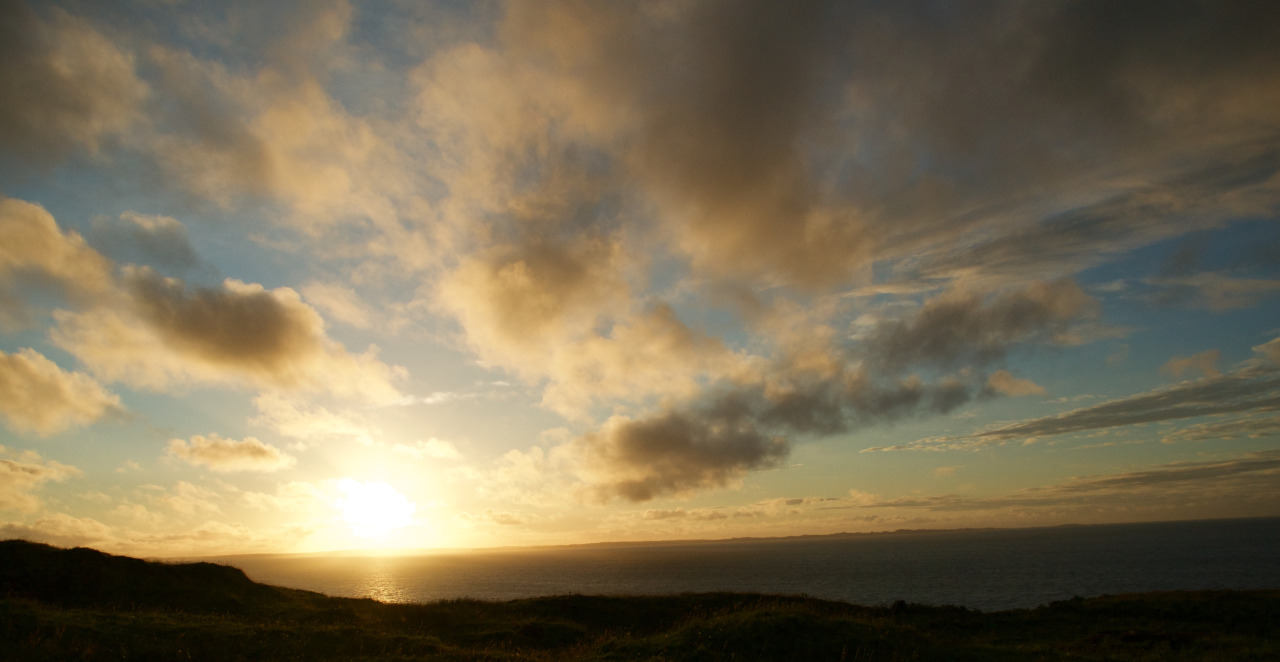
It’s becoming a bit of a family tradition. Piling the car high and driving northwards for our summer holidays. Usually to Mull, for a family holiday in and around the islands off the North West coast of Scotland. With a few detours on route, this year via the Northumbrian coast.
The holiday and the journey have become a bit of a ‘yardstick’, a marker against which we measure the year - a mid-point where it’s possible to glimpse just far enough forwards and back to take stock of another years temporal changes and what might lie ahead.
And perhaps the islands are a useful tool for this. Although they’re a permanent fixture for the people and animals who inhabit them, for us the islands are a temporary respite, a fleeting viewfinder that helps us see more clearly. There’s a liminal quality to our visits, not permanent but through repeated stays more than just temporary.
2015-09-22 21:49:45 GMT permalink
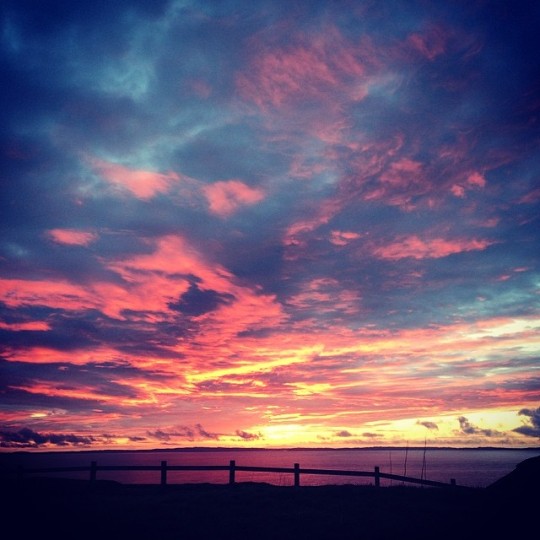
There’s always another island.
Looking west from Haunn, Mull I can see the island of Coll across the water. The weather always looks slightly better over on Coll, the sunset brighter, the beaches a golden streak across the dark island.
And beyond Coll, the Uists, connected, almost to the conjoined isles of Harris and Lewis. There is always another island.
Which creates a slightly uneasy feeling, an unrest. A glance at the ferry times, thinking about the logistics. In the same way some people feel compelled to cycle up alpine passes, bag Munros or tick off indian provinces, the very existence of un-visited Hebridean islands creates some kind of implied experience vacuum.
Until perhaps you reach St. Kilda, the edge of the world, just Greenland to keep it a distant company.
But this is really a flat earth approach to island hopping, where the horizon represents the edge of the known world. A spherical planet surely means that there is always another island, near, far or unreachable.
2014-05-12 09:10:43 GMT permalink
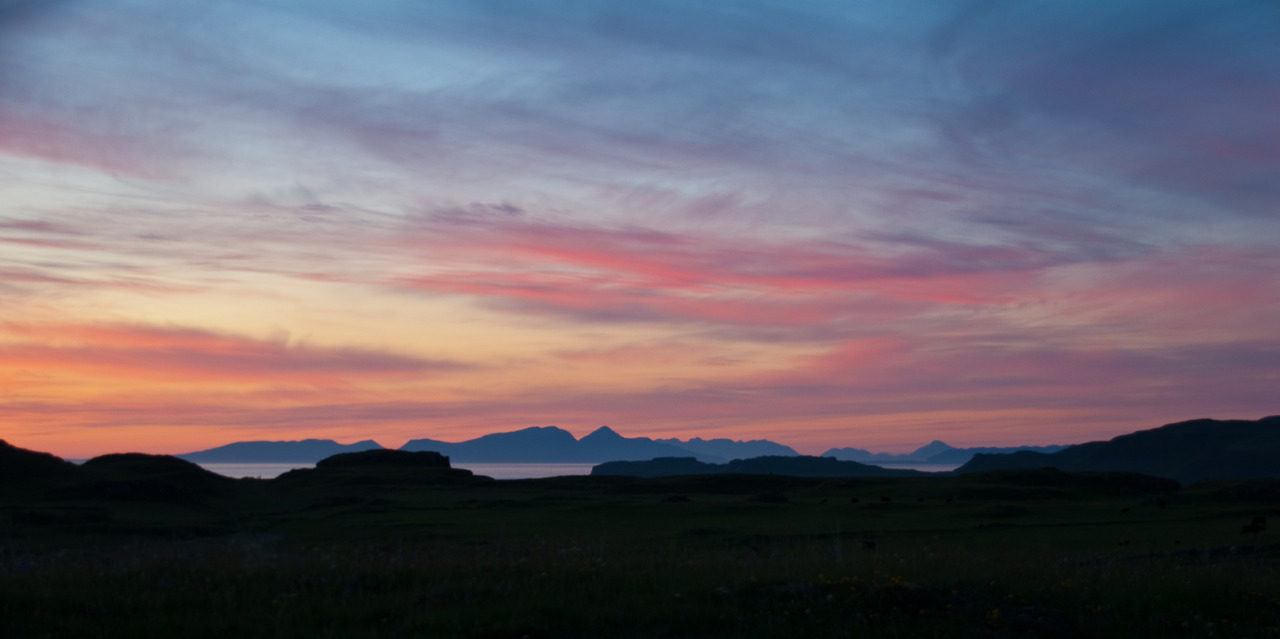
Mountains of the mind.
We’ve been back in Buckinghamshire for a couple of weeks, but the Isle of Mull - the mountains, beaches and views are still travelling with me.
Sun set from Treshnish. Looking out over Eigg, Rum and Skye.
2013-07-07 21:26:38 GMT permalink
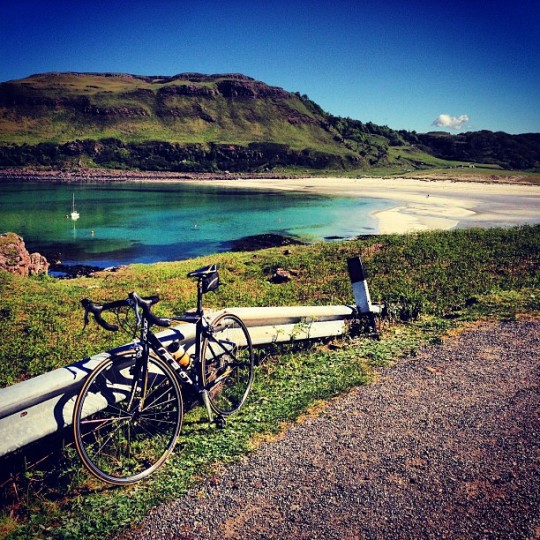
Gone for a ride…
Calgary Beach, Isle of Mull, Scotland
2013-06-13 12:02:08 GMT permalink
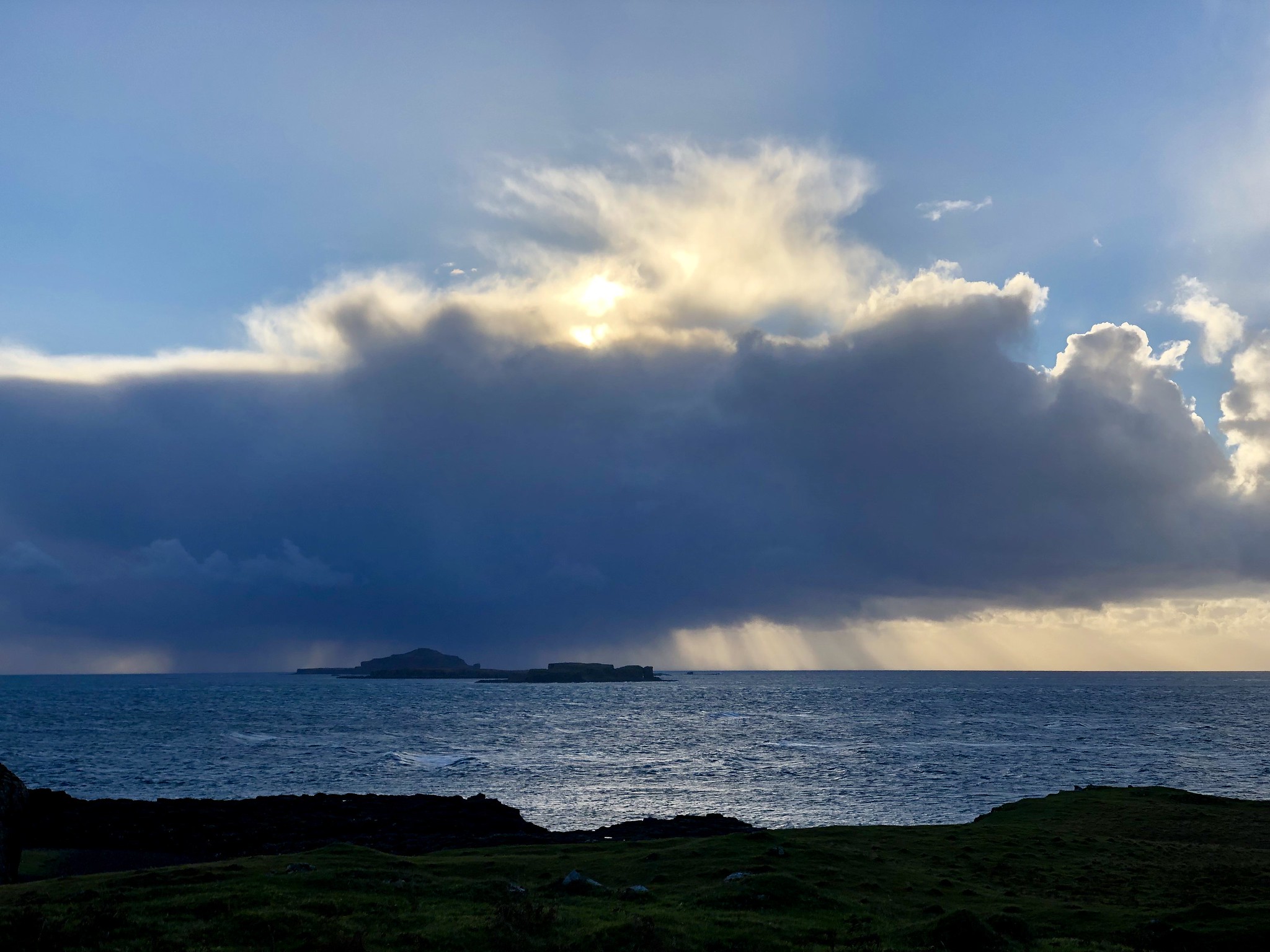
An autumn day on the west coast of Mull. It’s been wet all week and the desire to sit by the wood burner with a book and wine has been anchoring us all to the sofa.
But today it’s bright and clear, though the wind that’s bringing the change of weather is wiping down from the artic with an icy core.
Treshnish point is a rare corner of our nation of islands. Probably continuously inhabited for the last 6000 years, it wears the impact of human endeavour lightly. The landscape shaped by a mix of people, farming and the elements that sometimes pummel the exposed beaches and clifftops. There’s evidence of old sheep pens and landings as I walk beyond the last cottages at Haun.
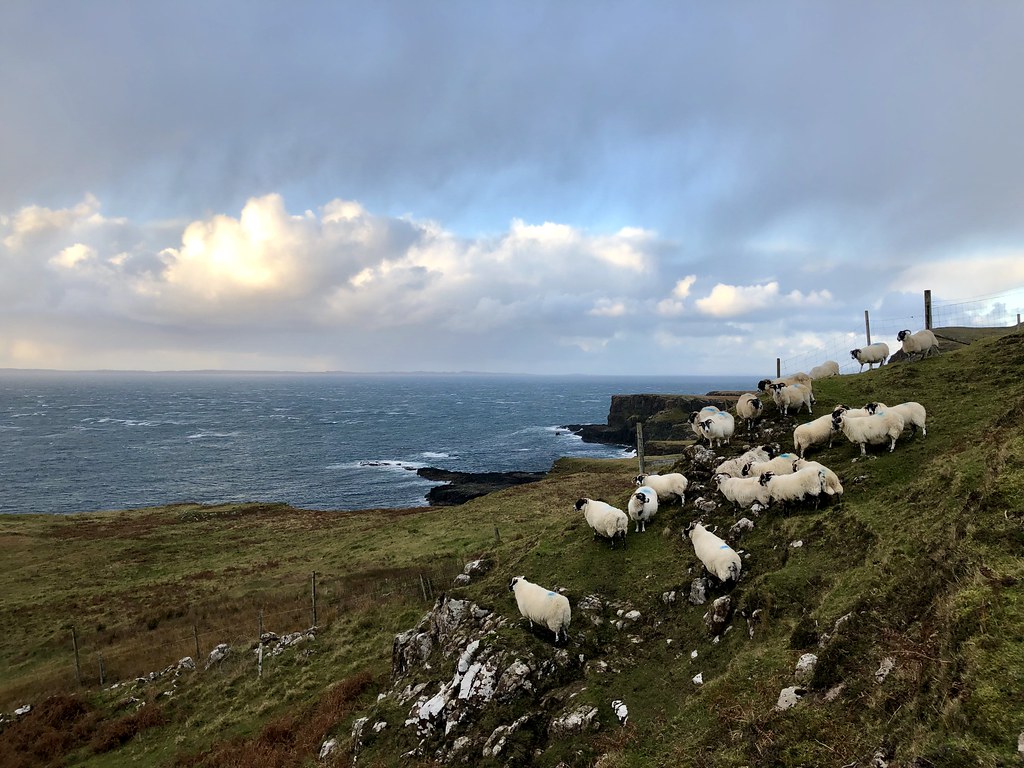
In late autumn the wild flowers that I’ve seen here are in retreat but the grasslands that foot the rocky steps are punctuated by a variety of fungus and mushrooms that stand out with their red and yellow marks against the bright greens and moody greys of the landscape.
With the wind behind I’m blown down the winding track past the rocky coves and rock stacks that look out to towards the twin islands of Coll and Tiree, and the carved presence of the Treshnish Islands. The ground is a little boggy underfoot in places, the result of a wet end to autumn.
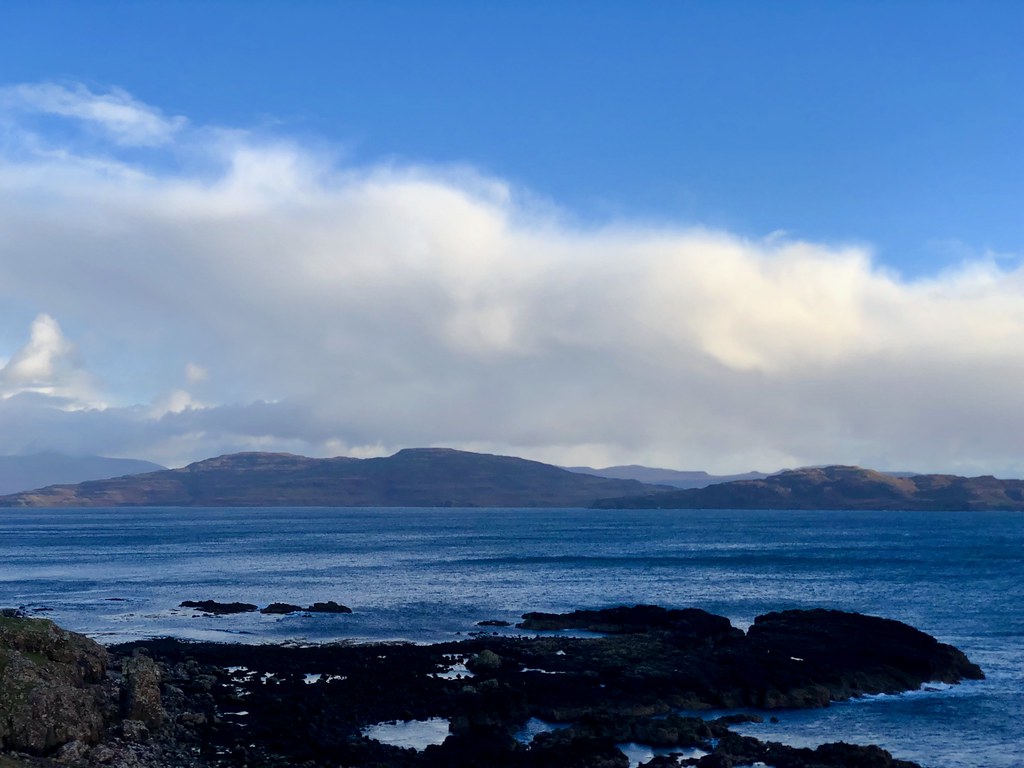
On along with the coast watching the huge waves crash into rocky stacks and across small pebbly beaches punctuated with small caves and dark black rock pools. As I round the corner, the vista opens up. The islands of Gometra and Ulva nestled into Loch Tuath. At first glance the two islands look like one, but on closer inspection the small gully between them is just visible in fading light. In the distance hidden amongst the clouds Mull’s own Monro, Ben More forms a brooding backdrop. Tomorrow the first snows of the winter will dust the tops, but today the mountain looks grey and austere.
A few minutes trying to soak it all in and then I turn, stoop into the wind and battle back along the headland to the comfort of the fire.
26/10/2018 permalink



























































































































































